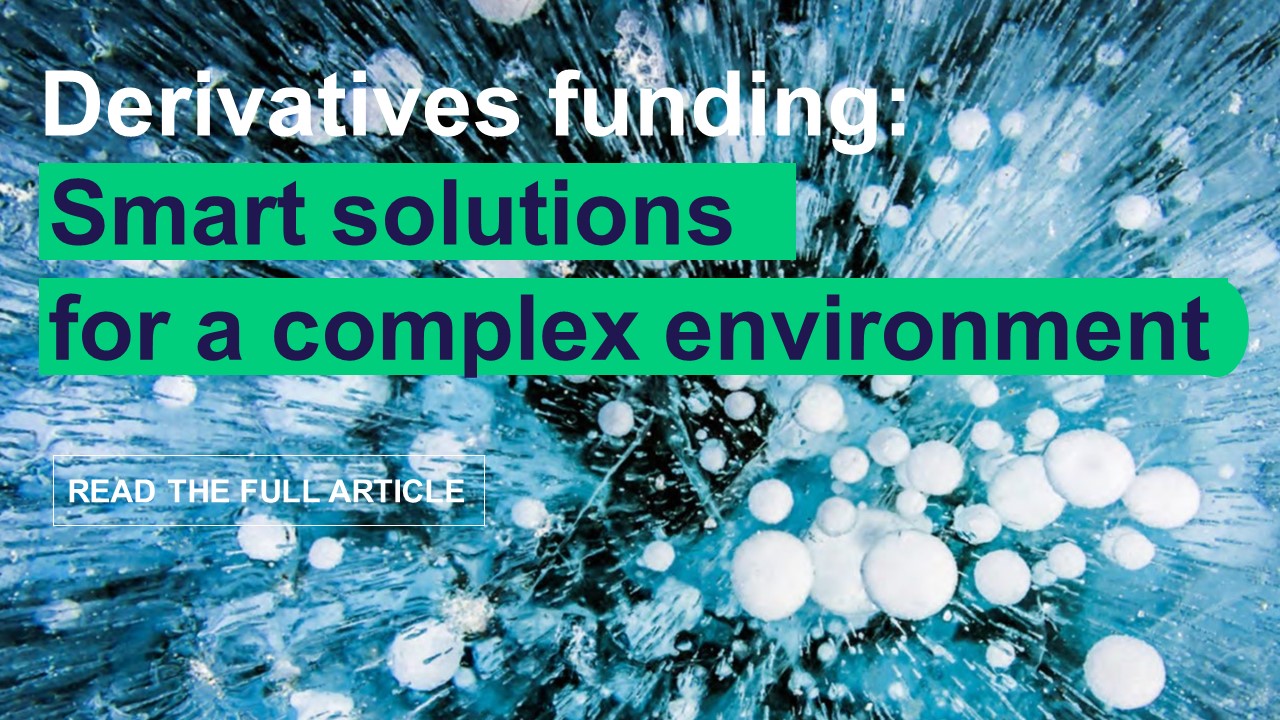What is your outlook for euro rates markets in 2024?
Rates markets have been busy, although 2023 did not meet expectations in all areas after a fantastic 2022.
A lot of real money is still tied up in alternatives, with end investors having committed to draw-downs before rates started to rise. That is despite them maybe not feeling as bullish on alternatives as when they entered the asset class.
Rising rates have also led to write-downs in some fixed income portfolios, as older trades consume capital and potential restructuring ideas risk revealing hidden burdens. In addition, less fresh money has been coming into accounts.
So, even though a lot of real money accounts have actually shifted their asset allocation to more fixed income, the market impact of that hasn't been fully felt so far. This means that activity is slowly picking up, and some of the business that was expected in 2023 will come through this year.
In 2024, discussion will continue to be dominated by rate cuts, how much inflation is still lurking in the economy and whether recession is around the corner. Expectations of falling rates are in general always a good environment for rates desks, as clients either want to protect themselves against falling rates or take the opportunity to lock in higher rates — either way such conditions tend to create an active environment.
Which products can we expect to be popular in these conditions?
A falling rates environment is often supportive for structured products. With the long end of the curve still being inverted there are also still some pockets of the market that can be exploited there.
At this early stage in the year, it is a bit hard to tell how things will shape up though. Vanilla bond issuance and pipeline has been immense in the first weeks of January. From here, the market is likely to take a breath and then we will see if the focus shifts to structured business.
What activity are you seeing in the Eurex euro interest rate derivatives market?
Euro swaps and STIRS liquidity is still developing, with EMIR 3.0, the regulation that will shape it, still an ongoing debate.
As long as the swaps market is based on Euribor, it will be very hard to overcome Euribor fixing risks and curve anomalies. From our experience of curve building, it is very hard to make sense of all the ingredients that go into the euro curve — you have the €STR curve and the Euribor based swap curve, which beyond two years is okay.
But what to make of fixing and convexity trades (versus futures) is confusing. The market often doesn’t really fit together, sometimes even at two-year maturities. That’s not about the Eurex vs LCH basis, it’s a more general statement on the interest rate derivatives market.
How do you see the interplay between €STR and Euribor developing?
From a bank perspective, I would like to see much more executed on €STR in particular because the Euribor fixing process still leads to surprises sometimes. However, for corporates and project finance users, the calculation is different.
Take project finance, and other loan participants - users want to know in advance what they're going to pay in interest for a certain period. They don't want to deal with issues like daily fixings and averaging. That's why in the real economy there's a strong preference to stay on Euribor and why there is still a lot of Euribor flow. We have seen this trend assert itself in the US dollar market too, where after the transition from Libor to Sofr the creation of term Sofr seemed necessary to cater for the needs of this user base.
For banks, particularly in the derivatives space, the interest on your collateral is the main driver of how you look at funding and your discounting.
From that derivatives perspective, it makes sense to look at €STR rather than Euribor. It does feel like there is a slow-moving train towards an €STR base spread, with more banks steering towards spreads over €STR and viewing it as the most granular interest rate there is.
However, changing that logic within a bank is a big undertaking and a slow process, with technical adaptation of the systems, adjusting to a new legal framework and auditors.
Plus, when a firm executes capital markets issuance, asset swap levels will be against regular swaps i.e. six-month Euribor. That's the reference you'll be quoted at and how you're priced in the market.
Will the efforts by Eurex to greater consolidate euro rates trading help the market?
The rationale behind Eurex’s STIRs initiative is very solid. With a joint collateral pool, you can net your margins on all the products. It's a good story as funding costs are an important part of the functioning of a derivatives trading desk and becoming a bigger issue for banks. We see spreads are widening and that the ECB is no longer pumping liquidity into the market, and so therefore the fight for liquidity is on.
As EMIR 3.0 and its active account requirement is phased in, more banks will also receive more requests for Eurex trades and Eurex hedges, which will increase liquidity there.
Join the Derivatives Forum Frankfurt on Feb 28-29 and hear more about this topic.
Speakers:
- Thilo Rossberg, Head of FICC Markets, LBBW
- Matthias Graulich, Executive Board Member, Eurex Clearing
- Ales Lipensky, Managing Director, Head of Derivatives Funding Deutsche Bank
- Michel Lansink, Head of Trading, Cardano Risk Management
Moderator: Radi Khasawneh, Derivatives Editor, FOW


